When it comes to sizing filter elements, bigger is always better. If you can squeeze a 14-inch diameter air cleaner base on your carbureted or throttle body EFI engine combination, go for it. If you can fit a 4-inch tall (or taller) element under the hood of your car run with it. Shape and size dictate the ability of the air filter element to deliver maximum airflow.
K&N Engineering’s flow bench data has shown that for typical carburetors and EFI throttle bodies, airflow is greater when the diameter of the filter element is larger in comparison to the height. Following that idea, a 10- x 2-inch element will generally flow better than a 5- x 4-inch element. If space permits, K&N advises using a filter element with a height 1/5 to 1/4 of its diameter. Element diameter in relation to carburetor or throttle body throat is also important. The element should be at least three times larger than the throat.
The one exception to K&N’s rule is when a filter element is clamped to then end of a long runner, like with cold air intakes for EFI engines. The straighter the airflow shot into the intake tube, the less restriction there will be. In this case, an element that has a height two to four times greater than the diameter will work best.
The engine’s cubic inch displacement and RPM at peak horsepower are required to determine filter size. Knowing those figures, use this formula to determine the minimum effective filtering area an engine requires. A represents the effective filtering area, the usable portion of the filter:
A = (CID x RPM) / 20,839
After determining the effective filtering area, we can determine the required element height. H equals height and D is the estimated maximum element diameter. The .75 figure accounts for the element’s rubber sealing edges:
H = A / (D x 3.14) + .75
Let’s apply these formulas to a carbureted 350 cubic inch V8 with a 5,500 RPM horsepower peak. Applying the formula for filter area, we came up with the following:
A = (350 x 5500) / 20,839
A= 92.4 inches
To determine element height, let’s assume the element will be 12 inches in diameter. The correct height is as follows:
H = 92.4 / (12 x 3.14) + .75
H = 3.20 inches
If you are using a panel filter, simply multiply the length of the filter by the width, not including the rubber seals, to determine the correct filter size.
With the minimum height figured out, you can go filter element shopping on the Summit Racing website. It shows elements that are 3.43-, 3.44-, 3.47, and 5.50 inches in diameter. Since the 3.20-inch figure is the minimum filter height our theoretical 350 requires, the right filter is the one that fits under your hood (if you run one).
Let’s take a look at some filters I had for my big block-powered 1969 Nova and see which one I ended up using.
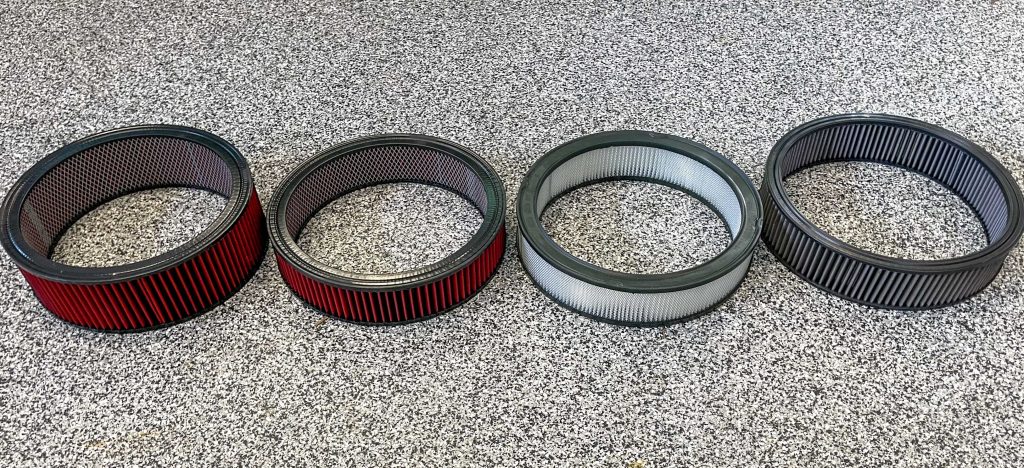
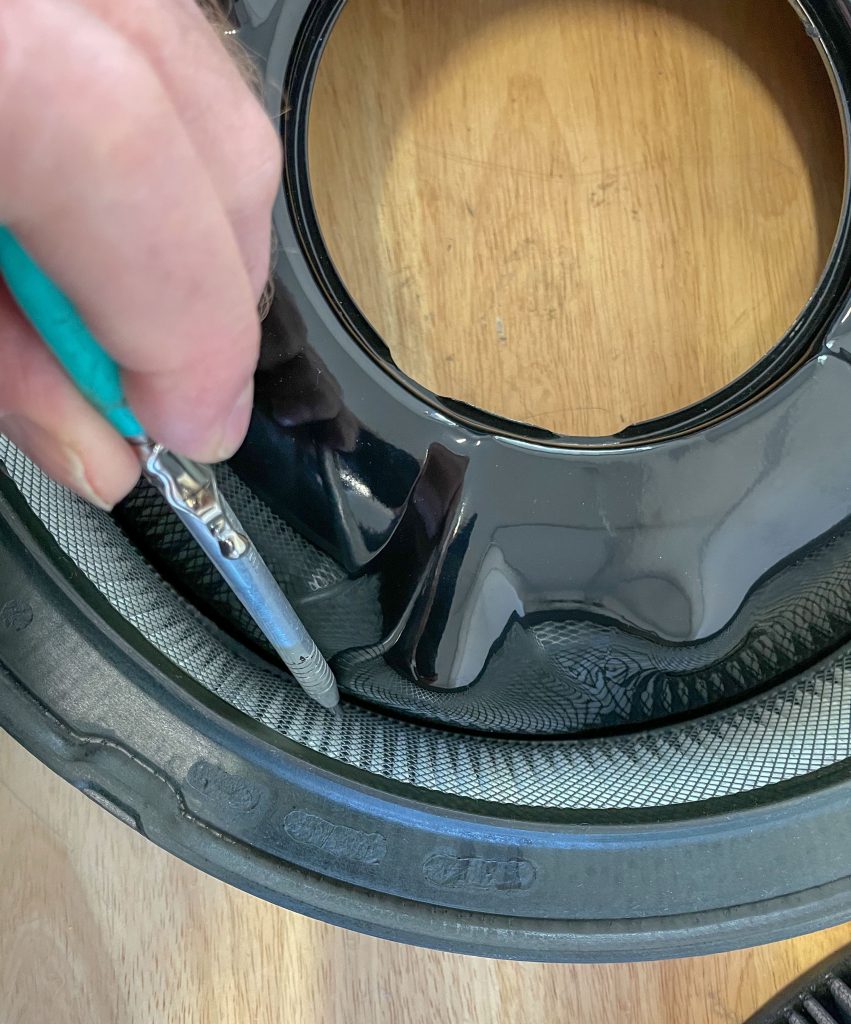
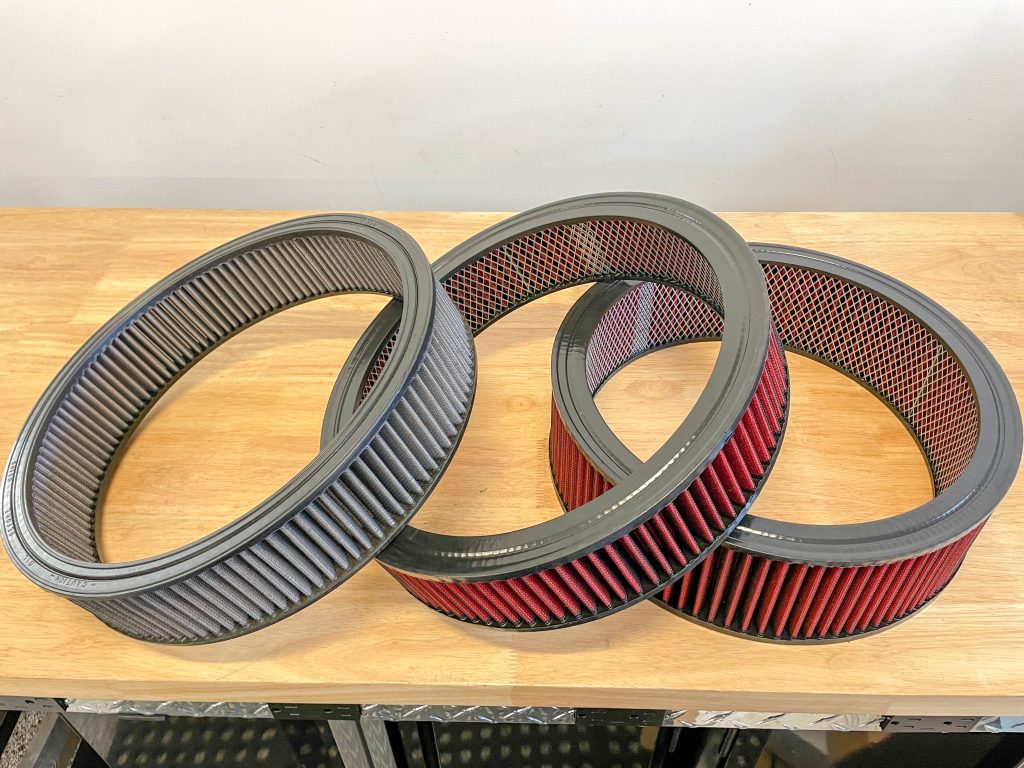
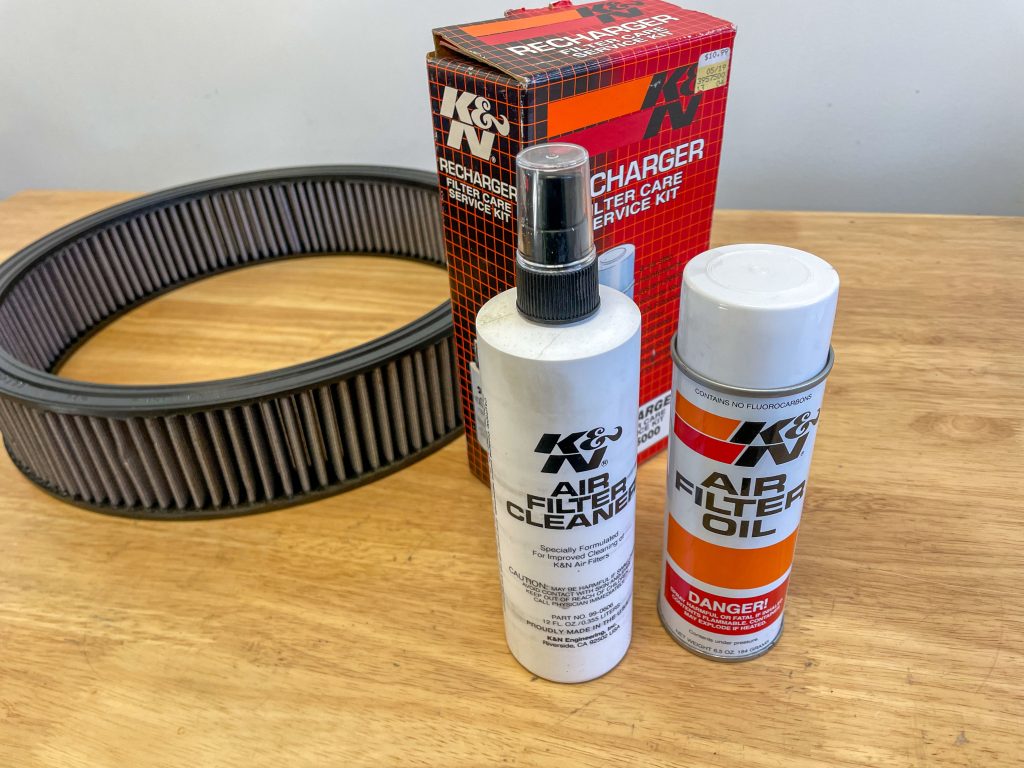
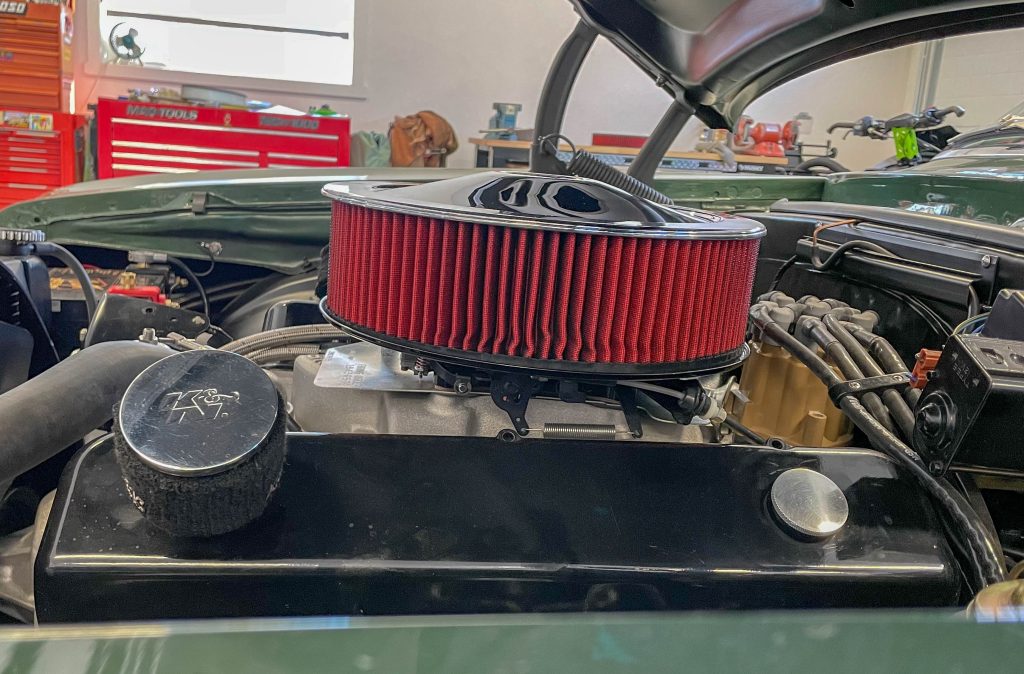
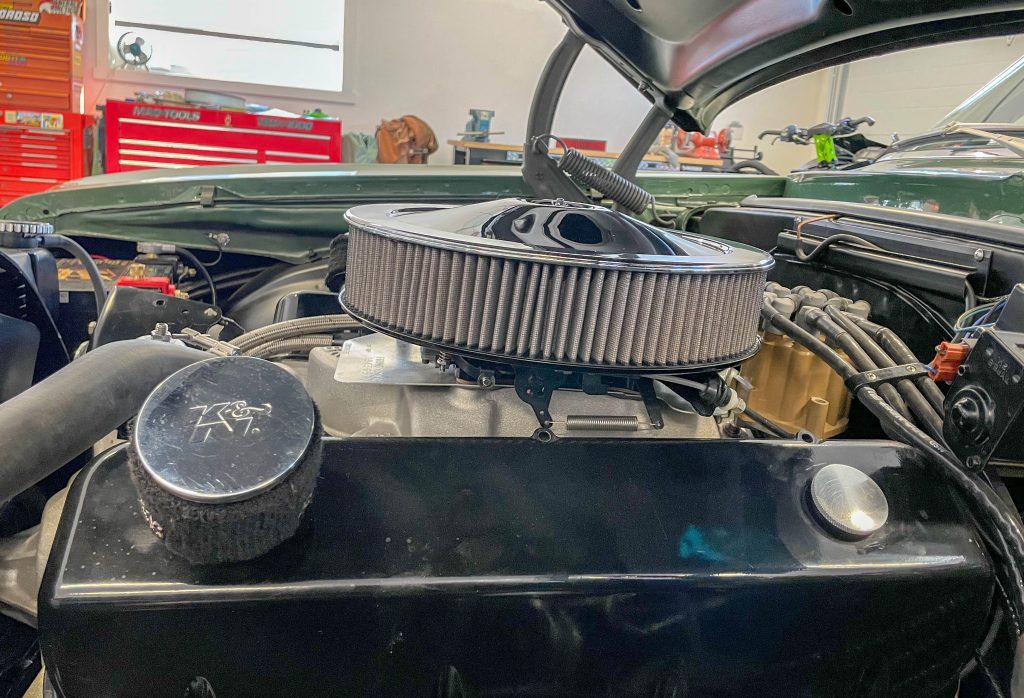

[…] 5. How to Match Air Filter Size to Your Engine […]
do i really need an air cleaner
i have an old 4 cyl with a carb that is difficult to fit an air cleaner on due to area limitations.
if i have some 20 micron woven stainless steel mesh, will it protect my engine just as well?
Yes.
Don’t put ss mesh where little bits could be sucked in.
If you like rebuilding your engine every couple years because of top end wear, then feel free to run it unfiltered.
[…] math said was the right surface area for my engine. The website that gave me the information was: https://www.onallcylinders.com/2013/1…r-size-engine/ and K&N's website has some slightly different math that I didn't use. No idea if this was a […]
[…] here. How to Match Air Filter Size to Your Engine – OnAllCylinders __________________ 513 BBF – Bigger is […]
What about turbo, the CID and RPM don’t tell you squat when you run E85 and 40PSI
If you know your horsepower you can estimate your cfm and adjusted CID equivalent.
[…] Oct 2008 Location: So Cal desert Posts: 1,362 Re: Cowl Hood Check out this article: How to Match Air Filter Size to Your Engine – OnAllCylinders Most people do not need as tall an element as they think they do. The 454 in the example with a […]
[…] Stage I or Arlen Ness equivalent is more than sufficient. How to Match Air Filter Size to Your Engine – OnAllCylinders Mala Ipsa Nova Psalm 144:1 Luke 22:36 '05 Carbed Night Train 111 rwhp, 112 rwtq Best 1/4 […]
[…] How to Match Air Filter Size to Your Engine […]
What is the formula for an oblong air filter 29.8 x 9.5?
Looking for a 6 3/4″ diameter x 2 7/8 to 3 1/4 height air filter element
Wayne – your formula to establish ‘A’ uses a different divisor to the one on the K&N web site.(20839)
Why?
What would be the best filter size for 2.6L engine weber/style 32/36 carb?
Go watch Engine Masters episode in this, it’s all answered for you with dyno video.
What would be the correct filter for a 383 stroker bored .40 over flat top pistons,dart heads,Edelbrock highrise dual plane intake w/650 Edelbrock carb,as well as all Edelbrock engine internals comp cam pushing roughly 595 hp. Thank you… All in an 86 1/2 ton k10 4×4 short bed.
[…] components are meant to fit specific vehicles. When choosing an air filter, it is essential to consider the model and make of your car. This is to avoid a situation where the filter does not fit properly. It can affect the performance […]
the filter on my ’67 chevelle (454) touches the bottom of the hood. filter is 14″x3″. are there shorter (in height) filters i could use? such as 14″x2″? trying to find a viable solution.
Thanks,
Lee
Hey Lee–thanks for reading. And yes, absolutely. Mr Gasket’s Low Rider air cleaners come to mind immediately. They’re 14″ x 2″. CLICK HERE to check ’em out.
…
Also, depending on your specific carb/manifold setup, you could opt for a “dropped” style air cleaner that uses a recessed base so you can run a standard 3″ tall filter.
…
As of this reply, there are close to 300 round air filters at Summit Racing with a “dropped” base–click here to take a look.
…
Thanks again for reaching out, good luck with your search!
I base my air filter sizing on how many miles it will take to plug it up with dirt and dust rather than anything to do with the engine itself.
This often means my air filter is way WAY bigger than the formula would otherwise calculate.
I care about longevity, so I run the biggest filter I can.